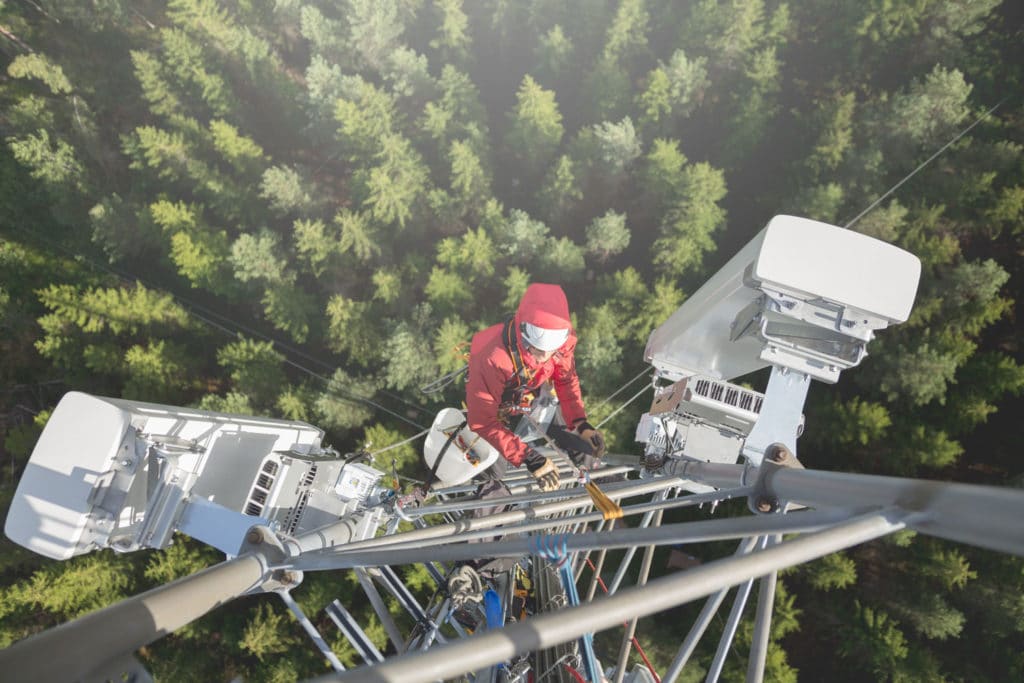By: CostQuest’s Consulting Services Team, and Hailey Farrow, Marketing Manager at CostQuest.
Voice and cable networks pushed to evolve for broadband demand
As the usage of personal computers and mobile devices has exploded over the last 30 years, so has the need for even faster broadband service. Originally, traditional telephone networks and cable networks were built to address the needs of a pre-Internet world. Telephone networks were made to provide voice service to the masses and, for business, a variety of special access services. Cable networks were built to compete with over-the-air video providers, delivering video content over an analog cable television system.

As the demand for internet access increased, both telephone networks and cable networks evolved to accommodate broadband services. For telephone providers, copper networks were augmented with Digital Subscriber Line (DSL) equipment and protocols to provide broadband. For cable providers, two-way communication networks were created along with the deployment of Data Over Cable Service Interface Specification (DOCSIS) equipment and protocols.
Providers install fiber to adapt to high-speed internet
While the demand for higher-speed services increases, carriers have been adding fiber to their networks to squeeze as much bandwidth as possible out of their existing copper/coaxial cable networks. Additional costs are incurred when the fiber is installed (new cable and equipment) in order to expand high-speed broadband services. However, there is a limitation in cost and capability to continue augmenting these existing networks to provide the ever-increasing bandwidth customer demand. Or possibly what could be a new mandate as part of a newly created government subsidy mechanism.
While the bandwidth provided via cable networks is higher than that of twisted-pair copper, the capability of the cable network is reaching its limit relative to the services being demanded. As a result, many incumbent telephone and cable companies along with new entrants are building fiber to the premises (FTTP) networks to meet the bandwidth demand in urban, suburban, and rural areas. Fiber provides robust technology that can economically meet current and future broadband needs.
Fiber offers backhaul to mobility and wireless networks
As a result of optical equipment continuing to increase its capacity, fiber is a future-proof last-mile technology for wireline networks. In the middle mile, fiber is used to create backhaul routes to serve the demand created by wireline and wireless networks. In the case of wireless, fiber is used to provide backhaul for the growing number of towers that are needed to deliver even faster wireless broadband service. The need for additional fiber backhaul will grow as last-mile Fiber networks become more ubiquitous and as mobility starts to roll out 5G service. So as wireless and wireline last-mile networks grow, so too will the need for a robust fiber middle-mile network.
Efficient fiber routing to end-users keeps costs minimal
An FTTP network consists of the fiber cable, optical equipment at the main service hub and at the end-user locations, passive splitters in between the service point and customer locations, and middle-mile optical facilities that connect to the Internet.
To deploy the FTTP network, fiber cables must be routed from service hubs, central offices, or hubs and head ends, to end-user customers. En route to the customer, fiber cables can be buried, placed into conduit systems, or strung from poles. Passive splitter devices placed somewhere between a service hub and the end-user, usually located in a neighborhood, allow for the optical signals to be split from one to many fibers, so a smaller fiber cable can be used to/from the service hub to the splitter.
The larger fiber cables are then run from the splitter to end-user locations. If poles and conduit systems exist (owned or leased), they can be used. Otherwise, a carrier must decide how best to construct the structure (poles, trenching, and conduit) for new cable routes. Understanding the efficient routing of fiber, the selection of construction, and the placement of splitters help keep costs to a minimum.
Cost impact as networks continue to evolve
To understand the costs of constructing a new network, which we covered in our previous article, Calculating Network Cost, one needs to understand:
• How best to route fiber to serve customers (use of precise broadband serviceable locations/BroadbandFabric)
• What size fiber cable is needed
• Where best to place equipment and capacity of the equipment
• What are the expected maintenance costs of that new network are
As customers sign up for service, carriers also pay taxes on revenue earned and on owned property. Carriers will also have to service any debt (or pay dividends to investors) incurred from borrowing money to purchase materials and pay for construction labor.
Finally, once the fiber networks are built, they must be maintained through general upkeep, replacement of faulty equipment, and replacement of outdated equipment. However, as a passive optical network between the customer and the provider’s major nodes, the cost to maintain fiber networks is a fraction of the cost to maintain the existing copper and coaxial cable networks. In addition to the efficiency gained, Fiber rollout can lead to impacts on your network valuation, and related property tax liability (read our RCN approach to learn more).